- This Historic Moment: UNC Receives $127 Million for new College of Osteopathic Medicine
Thanks to the passage of House Bill 24-1231 signed into law by Governor Polis May 1, UNC’s proposed College of Osteopathic Medicine is closer to fruition. By educating the next generation of doctors, the new college will also address Colorado’s critical shortage of physicians.” An inaugural class of 75 is expected to start as early as fall 2026, with 120 medical students the next year and growing to full class size of 150 students thereafter.
The bill provides $127.5 million to fund construction, startup and accreditation expenses. The state will also invest nearly $41 million from its statutory reserve to cover the project’s escrow needs, as required by the Commission on Osteopathic College Accreditation.
Opening the College of Osteopathic Medicine requires a minimum investment of $200 million. In addition to the state funding, UNC has initially raised $31 million from generous donors, including a landmark $25 million gift from The Weld Trust to support the transformative initiative. Fundraising for the new college is ongoing.
“The College of Osteopathic Medicine will yield dividends for Colorado, today and for generations to come,” said UNC President Andy Feinstein. “It will play a pivotal role in strengthening the state’s health care workforce, particularly in rural communities.”
With the worsening health care provider shortage in the state, especially in underserved and rural communities, more doctors and health care professionals are needed to support Colorado’s growth.
According to the U.S. Health Resources and Services Administration, a staggering 65% of Colorado’s physician needs remain unmet. In 2023, all but three of Colorado’s 64 counties lacked enough primary care health professionals. The proposed College of Osteopathic Medicine at UNC will increase health care access for rural communities, leading to better outcomes for patients throughout Colorado.
The college would be the third medical school in Colorado and the only college of osteopathic medicine at a public university. Nationally, there are 40 accredited colleges of osteopathic medicine, but only seven are at public colleges and universities.
“D.O.s are more likely to practice primary care compared to M.D.s and they have a long tradition of providing care in communities where patients lack doctors,” said Dr. Beth Longenecker, founding dean of the proposed College of Osteopathic Medicine.
With about 26% of UNC students identifying as Hispanic or Latine, the university’s new college will help diversify Colorado’s health care workforce while building on its legacy of serving community needs — first addressing teacher education in 1889 at its founding and now, addressing physician education in the 21st century.
The site of the university’s former Bishop-Lehr Hall will be home to the proposed college. A ground-breaking ceremony is planned during Homecoming, September 28.
Economic Boom of $1.4 Billion to Colorado
The proposed College of Osteopathic Medicine will serve as a powerful economic engine for creating jobs, attracting talent and boosting local economies. The initiative is expected to bring a $1.4 billion boost to Colorado’s economy over the next 20 years, along with $84 million in taxpayer benefits, according to a recent economic impact study by Lightcast. The study also projects the new college will positively impact Coloradans well into the future, contributing at least $197.2 million annually in added income to the state’s economy after the initial 20-year period.
—Debbie Farris
- Born to Teach, to Make a Difference
Alumna Jessica May named 2024 Colorado Teacher of the Year
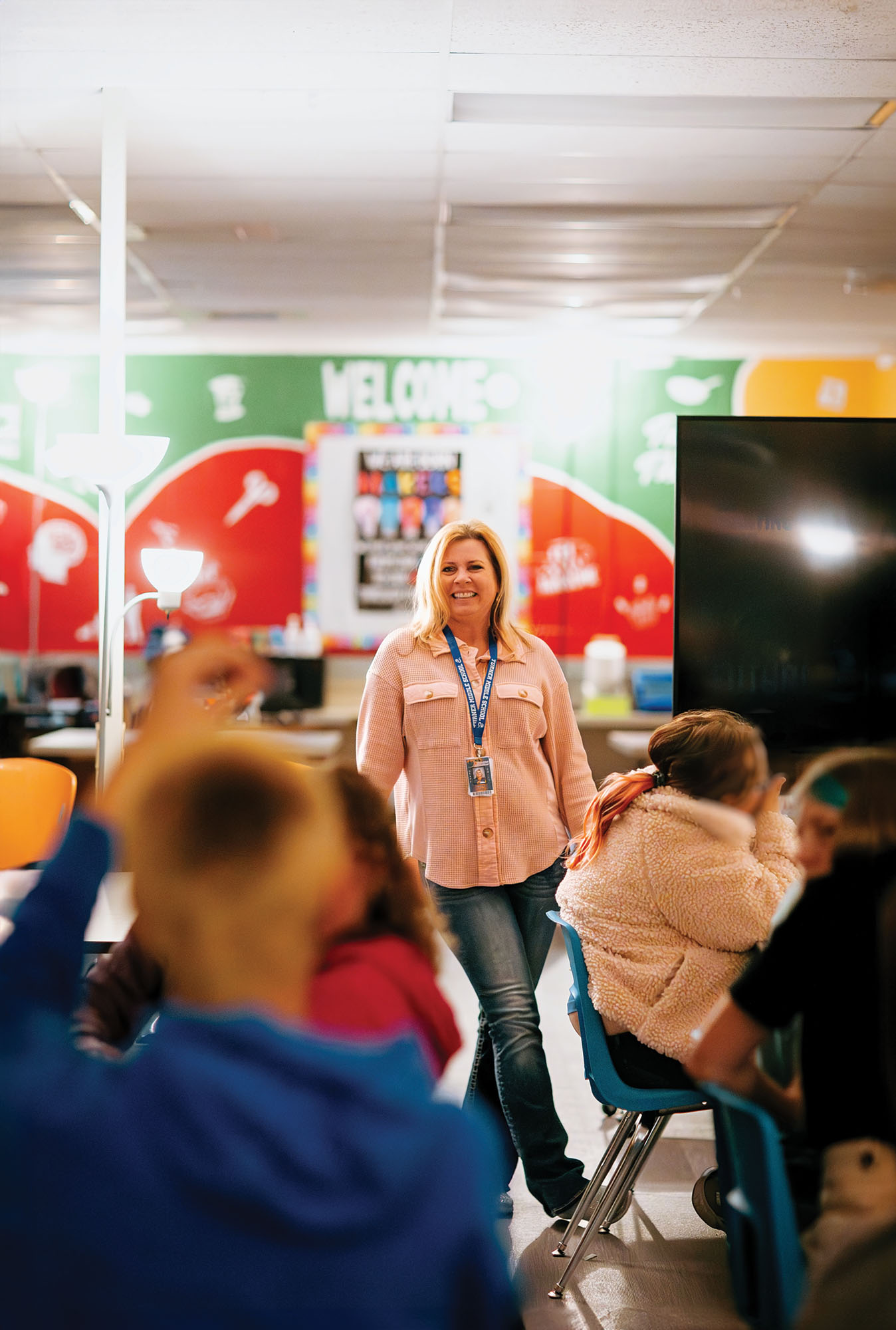
Jessica May, ’96 is all about experiential learning, but also, gaining the respect of her students. “Your job is to gain their trust through the acts of respect and patience,” said May, who was named Colorado Teacher of the Year for 2024. She currently teaches family and consumer science at Turner Middle School in Berthoud, Colorado.
May has been in the classroom for over 20 years, and she always knew she was meant to teach.
“I always loved school and would teach my dolls and stuffed animals in my bedroom. I felt loved, seen, special and supported every day I went to school. I don’t really ever remember thinking I wouldn’t grow up to become a teacher ... the profession picked me.”
When May was studying Elementary Education at UNC in 1994, the university was piloting a program where college students taught three consecutive semesters at Mary Blair Elementary School in Loveland, which is now part of Peakview Academy at Conrad Ball after a consolidation. She was teaching there when she was nominated for Colorado Teacher of the Year.
“Jessica’s selection for this award reflects UNC’s long tradition of excellence in teacher preparation. The fact that nearly one in three of all Colorado Teacher of the Year Award recipients are UNC graduates underscores our role as the premier teacher preparation institution in the state, as well as our deep commitment to education in Colorado,” said Jared Stallones, dean of UNC’s College of Education and Behavioral Sciences.
Since the Colorado Department of Education began recognizing exceptionally dedicated, knowledgeable and skilled K-12 classroom teachers in 1963, 18 UNC alums have been named Colorado Teacher of the Year. In addition, the university has graduated more than 50% of the education professionals in Colorado. When alumni walk out of the lecture halls at UNC, they walk into classrooms of their own, destined to begin their own journey to shape young lives.
May’s goal is to create long-lasting relationships with students, helping them realize their full potential. After teaching middle schoolers for two decades, she understands how to run a classroom — and it all starts with setting expectations.
“… If you don’t put the time and energy into it from the start, then the rest of your year will be filled with time wasted and energy spent calling parents, writing referrals, arguing with students and squandering educational instruction for the rest of the students in your classroom,” May explained.
This all-encompassing approach to teaching is a reminder that students, no matter how old, are people with needs, emotions and personal challenges. While hitting benchmarks is important, school is also a place where students spend a lot of time. “Make a point to let them know you see them,” May said.
Student learning is influenced more profoundly by the quality of the teacher than by any other school factor, according to the National Education Association. Teaching excellence can open doors of opportunity for students and transform lives.
By providing a top-quality education for teachers and education professionals, UNC has created a thriving and supportive alumni community of teachers.
“Alumni working in K-12 represent the largest professional community of UNC alumni,” said Chris Garcia, ’08, associate director of alumni relations.
One way the Alumni Association supports its alumni who teach is through the Alumni Educators Program. This outreach program brings UNC into K-12 classrooms by sending care packages to teachers to thank them for their work and celebrate their time at UNC. In addition, the university sponsors the annual District 6 School Kickoff Community Celebration, an event that provides backpacks and supplies to District 6 students.
- A Civics Lesson
As a Colorado Teacher of the Year, May is serving on the Colorado Education Commissioner’s Teacher Cabinet. According to the Colorado Department
of Education, cabinet members serve as a sounding board for the implementation of state education policy.“I hope to testify for some of the education bills to represent students and teachers,” May said.
She also has dreams of bringing ideas from her colleagues to legislators, using her platform, but she knows many state and district initiatives originate
at the state and district level. “There is always something to be learned from each [initiative] that will inevitably benefit your students and your own pedagogy,” adds May.As for her own goals, beyond Colorado commissions and representing the state at the National Teacher of the Year competition, May wants to fill the need when creating and maintaining relationships with her students. “Connecting to the hearts of students bridges the academic gaps that we see because they know they are cared about,” May said. In other words, students need their needs met and the rest will follow.
With the post-pandemic struggle to bring students up to their current grade level, May’s focus on meeting students where they are is more important than ever.
“They are supposed to test you and your commitment as an adult in their life — that’s the developmental stage of their adolescent brains,”
May said.One commonality with the subjects May enjoys teaching is they have real-world applications. Among those are not exclusively what she teaches now — family and consumer sciences — but also human sexuality, social-emotional learning, life skills and real-world reading. Making learning tangible for students means something to them, even in the middle school classroom.
Teaching truly picked Jessica May. She embodies what it means to be there for her students, support them and help them understand why learning is so important. She encourages teachers to “Feel free to be crazy and silly,” Adding, “they will act like they don’t like it, but deep down, they do. This is how to begin building strong relationships with even the toughest of students!”
After teaching for over two decades and having countless students in her classroom, May wants them to take away one thing: “I want them to walk away knowing that I love them, that I believe in them, and that I will always be here for them, no matter how old they are.”
—Brenna Rhiness and Christina Abel
- Fresh Faces of UNC
The Denver Gazette recently recognized two UNC alumni and one current student as breakout performers in the Colorado theatre scene. All three are talented artists, featured in the newspaper’s Fresh Faces of 2023 series.
Below they talk about their inspiration, love of theatre and how they approached their roles.
Miguel Muñoz, Don Quixote, The Quest for Don Quixote
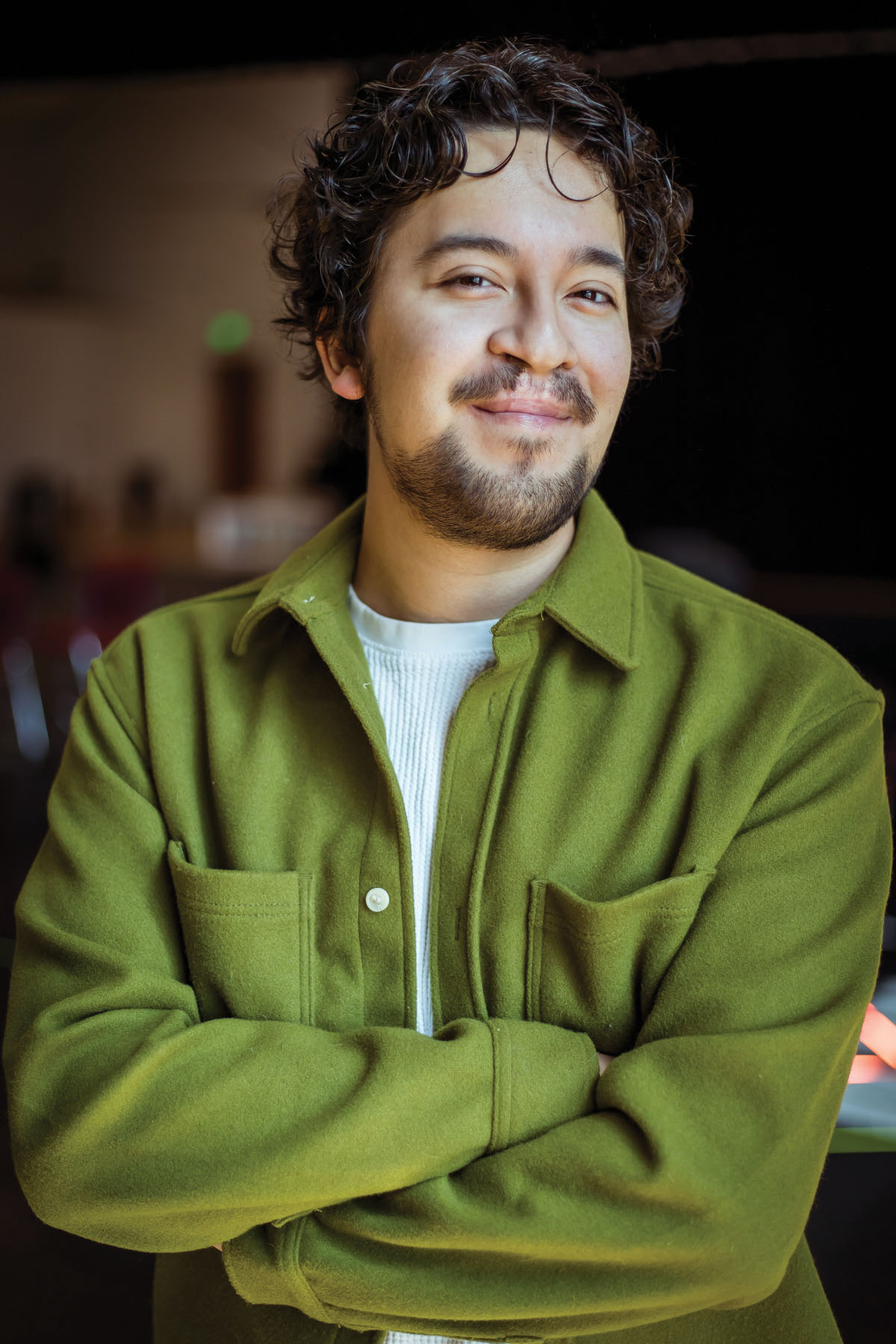
Do you see the windmills on the horizon?
Miguel Muñoz is a current student at UNC majoring in Theatre Education. In the summer of 2023, he played the titular role in the Little Theatre of the Rockies production of The Quest for Don Quixote.
The production centers on a playwright struggling with the age-old difficulty of adapting Don Quixote for the stage. The coffee shop where he writes becomes the scene, the patrons become the characters and Muñoz is at the center of it all, taking the playwright on an adventure of his own.
“I wanted to come off as harmless to the audience, making [Quixote] more innocent and childlike as opposed to the violent, erratic way he’s written, so that audiences could connect with him more,” Muñoz said. He worked alongside his best friend, another UNC student, Brian Davis, who played the struggling playwright.
Traditionally, even though Don Quixote was a Spanish epic novel, the main character was not usually played by a native Spanish speaker like Muñoz. “[His accent] was still difficult because I wanted it to be historical from Spain. Antonio Banderas as Zorro and Puss in Boots were some of my influences,” Muñoz said.
Muñoz, ever the storyteller, was inspired to start acting in high school. Seeing how much theatre helped him grow beyond the classroom, he went to UNC to “… focus on how to grow not just theater artists, but also good humans.” Because theater goes beyond the stage.
Natalie Fuentes, Yolot, Wolf at the Door

The big bad wolf isn’t who you think.
Yolot is derived from the Aztec word for heart. And Su Teatro company actress Natalie Fuentes knows how to play the heart, constantly there, but not always at the forefront.
“A lot of [playing Yolot] was learning to exist in the open and be in the moment. And also, to have such big, huge emotions in such silence,” said Fuentes.
Wolf at the Door is a fairytale meant for an adult audience. It centers on a strange woman appearing at the door of a hacienda in Mexico in the late 1800s. What she doesn’t know is the house she’s arrived at is a place filled with abuse and generational pain. She is also the Wolf at the Door.
“Her character is there to be a witness, it’s like the dog watching out the door. It’s finding the balance between the wolf’s physicality and the humanness in the cast. This is how we can breathe and create tension,” said Fuentes. Her performance was otherworldly in a way that unsettled the audience.
With the three women of the story coming together, the wolf, Yolot, does not end up fighting for her freedom. Isadora — the long-abused woman — steps forward and finds her voice.
Fuentes credits her success to the presence of her costars and her director, “While my fellow cast was equally a part of the push, the story would never have been fully realized without being helmed by a powerful Chicana in her own right, our director Micaela Garcia de Benavidez.”
eden origin, Millie, Toni Stone*
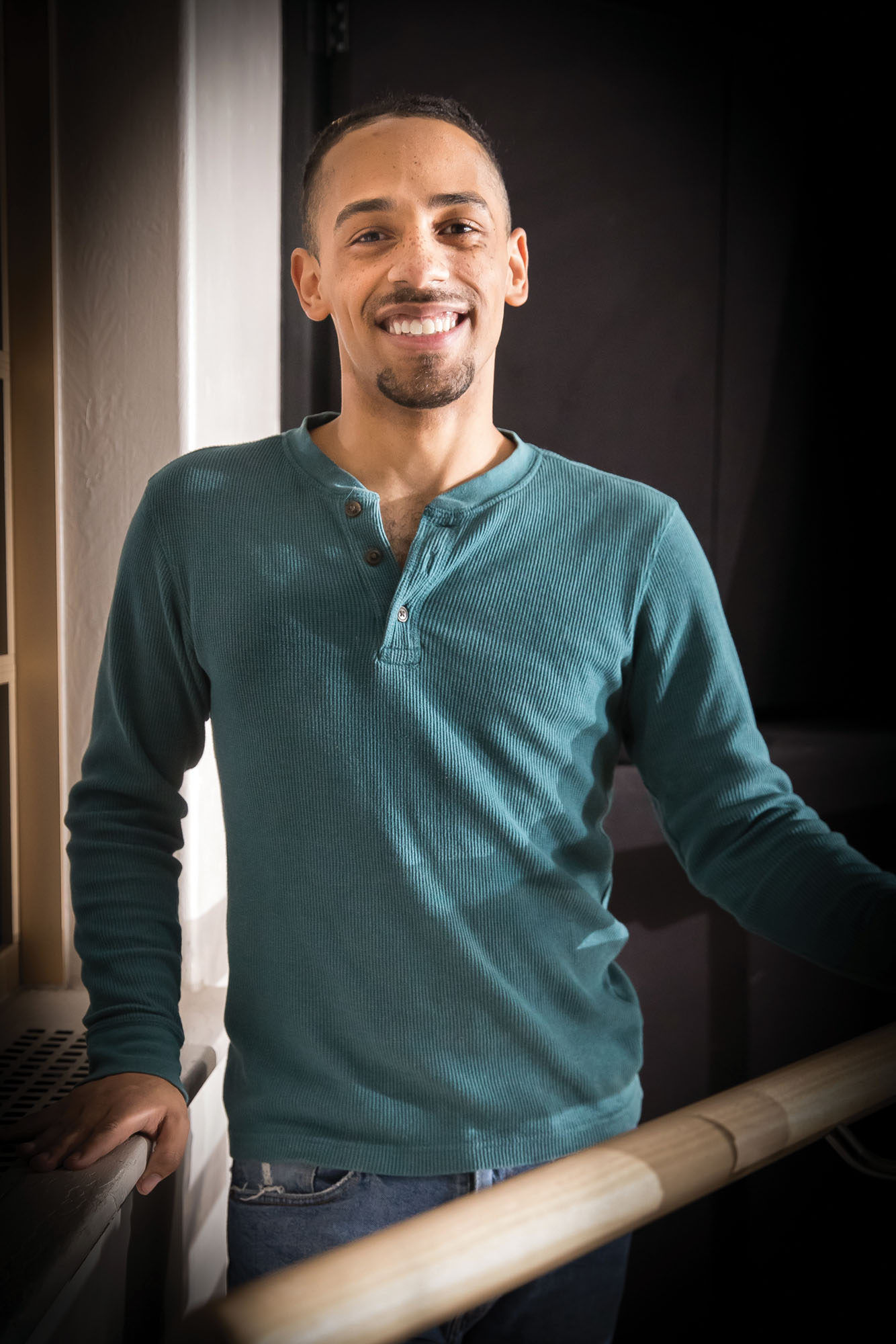
Are you ready to play ball?
Portraying baseball player Toni Stone’s confidante and friend, Millie, eden gave a restrained performance making the character lively but not cartoonish.
Toni Stone is a story about its namesake, the first Black woman to play professional baseball. Stone was rejected by the All-American Girls Professional Baseball League because she was Black. With tenacity and motivated by her love for the game, Stone became the first woman to play in the Negro American League.
Like Stone, eden knows what it’s like to shatter barriers. eden identifies as nonbinary transfeminine and was the first nonbinary nominee in Henry Awards history.
“I’m very grateful to know that I was received how I intended to be, without having to do any extra work. I was able to be honest and tell the story of a woman who lived a hundred times over without having a soul to give voice to her reality. To be recognized for showing the world that Millie was ‘somebody’ is incredibly special — and powerful,” eden said to the Denver Gazette.
*eden uses she/he pronouns and prefers to use her first name in lowercase on mentions.
- More Diverse Students Need More Diverse Teachers
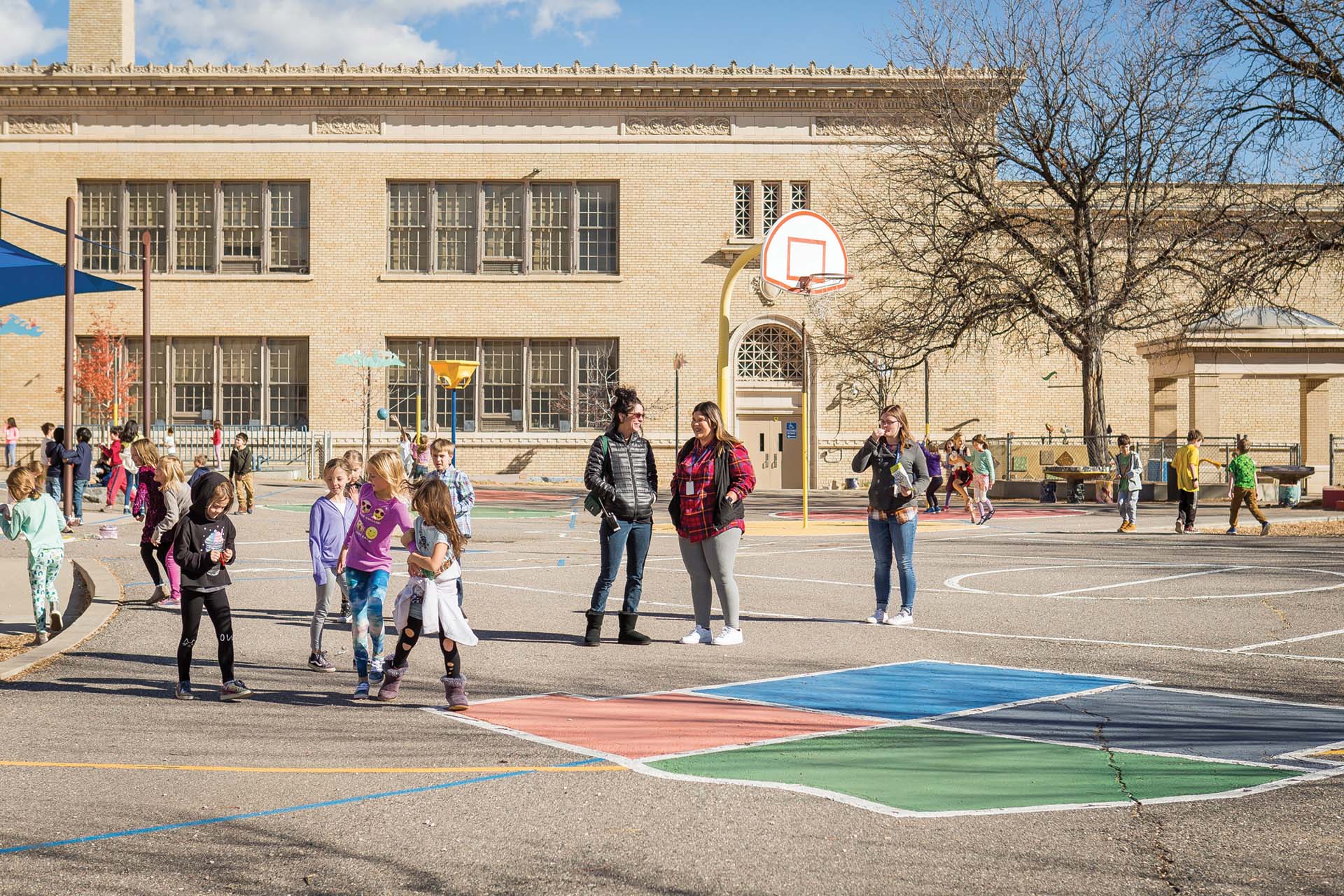
UNC’s Center for Urban Education receives national recognition for increasing educator diversity
Picture yourself as a young child in a Denver-area classroom on your first day of school. You’re half your adult height. Your teacher has skin a different color than yours and talks quickly. Your English is poor, and you hesitate to ask a question. At lunch, when you unpack traditional family foods from home, you get funny looks. In gym class, though you brighten when “football” is mentioned, you slowly realize this is not the “fútbol” you thought it was.
With a day like this, you may not have the confidence to concentrate on classroom lessons. In fact, you might retreat into silence and fall behind over time.
“I was that student. When I looked around, my teachers didn’t look like me,” said Janai McDonald, a UNC sophomore majoring in education.
UNC’s Center for Urban Education (CUE) in the Denver Center at Lowry aligns teacher preparation with the needs of local school districts and schools in early childhood education, elementary education with a culturally and linguistically diverse (CLD) endorsement and special education.
“I am thankful that CUE exists to help prepare a new generation of educators for our students of today,” McDonald said. “Working in a middle school [as a teacher candidate] earning my undergraduate degree is an approach that works for me. It gives me the skills and experience I need to be successful.”
CUE’s approach of sending racially, ethnically, linguistically, religiously and socioeconomically differentiated teacher candidates into about 75 schools across the Denver region also works for the schools, the students and their many peers who learn from their presence and contributions.
Recently, the center earned national recognition. The American Association of Colleges for Teacher Education (AACTE) awarded CUE its 2024 Increasing Educator Diversity: Promising Practice Award for “its demonstrated outcomes and advocacy related to increasing educator diversity.”
To appreciate what CUE is providing, it helps to understand that teacher preparation programs nationwide graduate an average 25% to 30% people of color, explains CUE director Rosanne Fulton. By contrast, CUE graduates about 70% people of color.
In addition, more than 90% are first-generation college students and Pell grant-eligible. This means they face significant barriers to their education, ranging from insufficient study skills to spending time working multiple jobs to earn money instead of hitting the books, exercising or resting. On a positive note, CUE student teachers can better relate to the children they encounter in their classrooms in the morning, before heading to their UNC classes afterward and on weekends.
“When students have teachers, principals, support staff who look and talk like them, it creates a sense of belonging so they can thrive and stretch themselves to learn from a place of increased security,” said Yolanda Greer, ’95, who served as a teacher, principal and district administrator before launching an educational consulting company.
The CUE program benefits future teachers in several important ways. First, as an apprenticeship program, it gives them in-classroom training beginning in their first semester. Most education students don’t start working with kids until their third or fourth year. By the time CUE students graduate, they’ve accumulated 3,000 to 4,000 hours of on-the-job training plus tutoring, small-group instruction and standard classes.
Second, CUE instructors are chosen for their broad, “real-world” experience — having taught in diverse settings, worked with youth struggling to learn English, or perhaps endured tough circumstances throughout college themselves.
“We are careful about whom we hire to be professors,” said Fulton. “What students really need is excellent professors who can offer both a supportive and caring program and rich and rigorous content.”
Modeling culturally responsive teaching strategies is deliberate, Fulton stresses. CUE student teachers can use these insights to bring culturally responsive strategies and responses into their classrooms.
A mentor program matches the college students with experienced teachers, principals and administrators throughout their program. This wraparound support includes visits to the school and provides ongoing, specific and actionable feedback.
In addition, students’ paraprofessional work connects them deeply with local schools and leaders, providing them with a distinct advantage in the job market. “Principals call and say, ‘Don’t let her interview anywhere else. I want her here,’” Fulton said. “They all get hired when they graduate.”
For school districts and principals — and, by extension, for children and families — advantages abound. The center is known for being closely aligned with area teaching needs. “We take the schools’ issues and needs very seriously,” Fulton said. “To be able to provide people of color and other diversities and who know the community is an asset in a teacher candidate. Principals are really happy about the whole package.”
In nominating letters to the AACTE nominating CUE for its 2024 diversity award, two local principals, Blake Hammond of Greenwood Elementary and Leah Schultz-Bartlett of Beach Court Elementary, wrote: “CUE works closely with us as building leaders and our teaching teams so that their teacher candidates learn practical applications of the theories that are included in the teacher preparation courses offered at CUE.”
One of those needs is diverse teacher candidates — just what CUE is supplying.
“The research is very clear,” said Fulton. “If children of color have teachers of color, their likelihood of success and graduation is much higher.” In a state where white teachers comprise 88% of the teaching corps, she adds, “Principals are desperate for people of color in teaching positions.”
An ethnic and language mix helps as well. In Aurora Public Schools, for example, 135 home languages are spoken across the district, according to a 2017 report from A+ Colorado, an independent, nonprofit organization focused on improving education.
“UNC’s program probably produces the highest percentage of diverse teacher graduates each year in Colorado,” said Fulton, “which is why we got the award!”
Fulton hopes the AACTE award will help not only encourage future financial support but also “further demonstrate the center’s ability to support our students’ becoming strong teachers.” It’s one more lesson the students and graduates are imparting themselves,
every day.—Ellen Ryan
- First Graphic Design Major Paves the Way for Future Students
Helping Students Become Who They Are
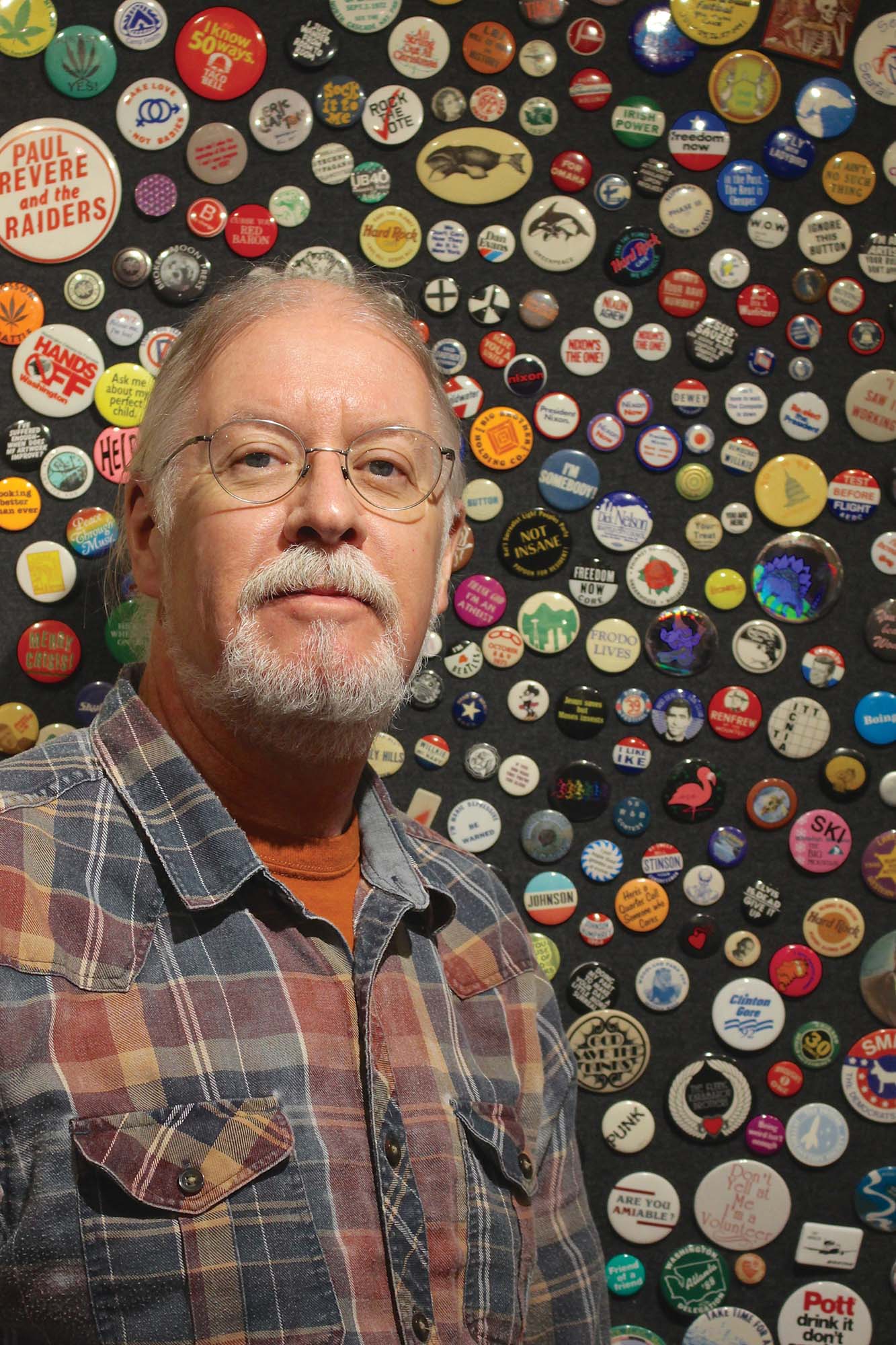
Glen Beebe, ’72 arrived at UNC by bus from Seattle in 1968 ready to broaden his horizons. As a Pacific Northwest native, he sought a completely different topography, climate, location and experience. Although he planned to major in Zoology and minor in Chemistry, that all changed at the end of his second year. Beebe set his sights on the field of graphic design as his future career. The only problem was that a Graphic Design major didn’t yet exist at UNC.
So, he designed one. Working with faculty, Beebe created his own specialized curriculum.
After graduating in 1972, Beebe moved back to Seattle where he landed a job at The Boeing Company. He spent his 30-year career at the aerospace manufacturing corporation working as a technical illustrator, graphic designer and “proposal king,” creating executive summaries to market Boeing’s innovative products and expertise to the public and private sectors.
Beebe credits his education at UNC “for teaching him how to think.” This skill allowed him to transition from manual paste-up at the start of his career to using computers and design software he encountered at Boeing.
After a long career, Beebe was able to retire and enjoy his passions, but continues to do graphic design — print work for artists, musicians and other nonprofit groups. His latest publication is Split Fountain Hieroglyphics: Psychedelic Concert Posters from the Seattle Area 1966–1969, a book he designed and produced with the well-known illustrator Scott McDougall.
Today, thanks to the path Beebe blazed, UNC students can pursue an undergraduate degree in Graphic Design where they learn to strategize, analyze, conceive and assess visual solutions for communication challenges spanning a spectrum of areas. These include Editorial Design, Corporate and Brand Identity Design, Narrative Design, Experiential Design, Packaging, Typography, Motion Graphics and Interactive Design, among others.
The program has flourished under the guidance of Professor of Graphic Design Mark Fetkewicz, who served as its sole faculty member from 2000 to 2023.
“We transformed from a solid traditional program into a contemporary program, incorporating emerging digital technologies [and] creating a dynamic, integrative curriculum,” said Fetkewicz.
In recent years, the number of majors has exploded as more students are drawn to the abundant career opportunities in the field. To meet demand, UNC hired two new Graphic Design faculty members in 2022.
Hye Jeong Park is an assistant professor for Graphic Design and Digital Art. Her interdisciplinary research and design project, Integration of Graphic Design and Human-Computer Interaction, focuses on user experience and the development of individuals’ creative ability.
Alum Samuel Dong Saul, M.A. ’11, assistant professor for Graphic Design and Digital Art, is a Mexican artist, designer and educator. In the past decade, his interests have shifted to digital illustration, interactive digital media and the implementation of user-centered design practices in college-level curricula.
Just as Beebe might have wished five decades ago, UNC students experience a comprehensive curriculum with hands-on studio experiences in state-of-the-art facilities that prepare them for professional careers in the industry or graduate school. With its nationally accredited program in Graphic Design, the School of Art and Design has become a leader in preparing distinguished artists and art educators in Colorado and beyond.
Thankful for his education and the trajectory it put him on, Beebe wanted to find a way to give back and support future Graphic Design majors at UNC. So, he established the Glen D. Beebe Scholarship Endowment in 2016, which was the university’s first endowed scholarship that exclusively supports Graphic Design students.
“Much of our success relies on taking care of our students [and] addressing their financial needs. Due to people like Glen Beebe, [we can offer] scholarship funding that provides a secure environment for students to learn and grow. The Glen D. Beebe Scholarship Endowment provides an invaluable opportunity for many students as they pursue their goals and careers in the arts,” said Fetkewicz.
—Christina Abel and Debbie Farris
- Eva Chavez, Senior, BA in Art and Design/Graphic Design Concentration
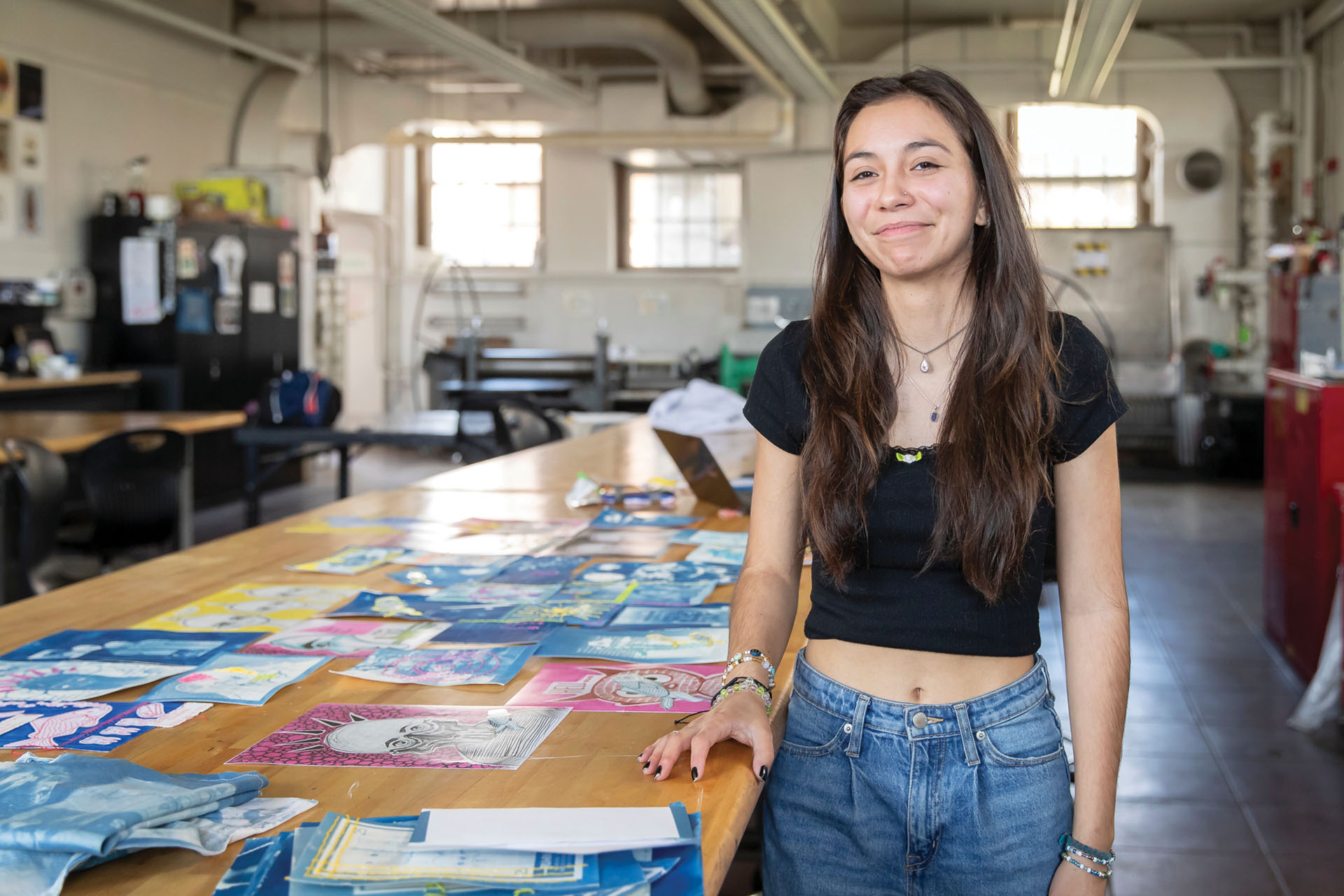
“My passion for creativity has been evident from an early age — whether it was sewing quilts, drawing or digital design, I discovered that creativity was the best way to express myself. I’m now a senior in the UNC Graphic Design program with a double major in Digital Media, and I am incredibly grateful to be a recipient of the Glen D. Beebe Scholarship!
“Receiving this scholarship holds vast significance for me as a struggling college student. For four years, I’ve worked multiple jobs and have had my parents’ support so that I could afford my studies at UNC. The scholarship provides much-needed financial assistance. As a Graphic Design major, having an internship in my field of study is mandatory. With this scholarship, I can now afford college and dedicate more time to my internship without the constant stress of working every available moment. Thank you from the bottom of my heart for making this possible.”
News Briefs – Spring 2024

Rendering of UNC's proposed College of Osteopathic Medicine.

